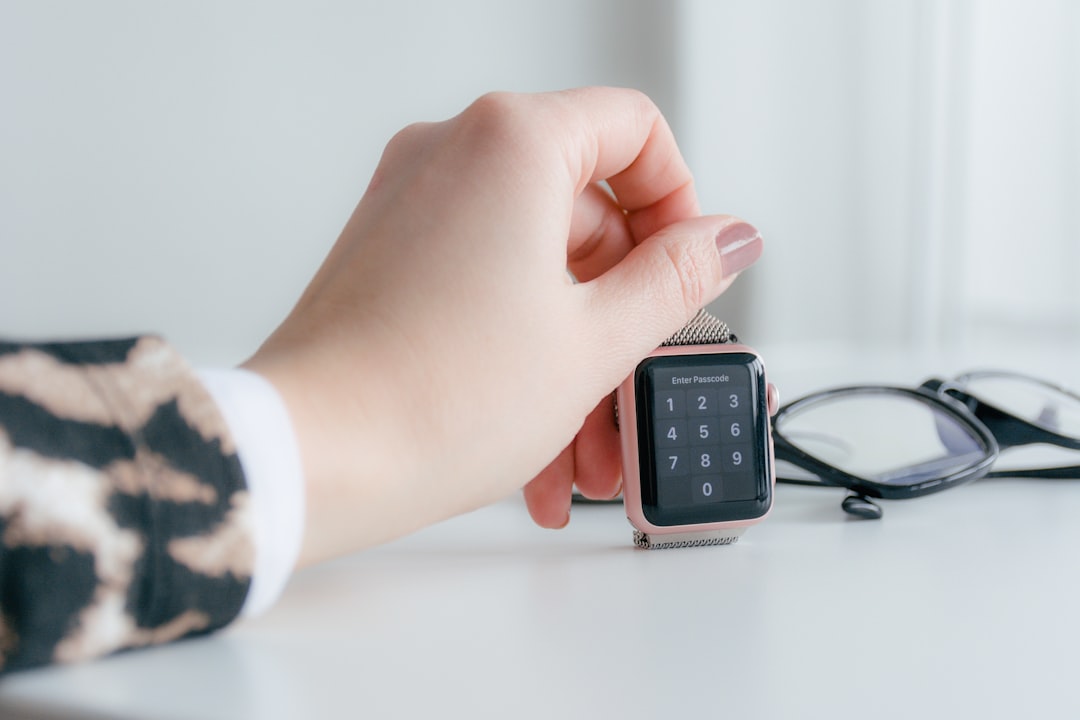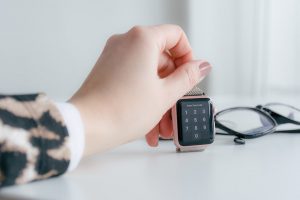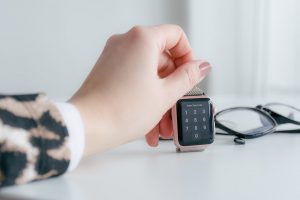Understanding Stress Beyond Smartwatches
Discover why smartwatches fall short in measuring stress. Explore new insights and learn more about accurate stress tracking today.
Study Overview
Objective
The primary objective of the study was to evaluate the accuracy and reliability of smartwatches in measuring stress levels. With the increasing popularity of wearable technology, many consumers rely on these devices to monitor their health, including stress management.
The study aimed to determine whether smartwatches could be trusted to provide accurate stress measurements.
Methodology
The research was conducted by a team of scientists from a leading university, who recruited a diverse group of participants. The study involved a controlled experiment where participants wore different models of popular smartwatches while undergoing various stress-inducing tasks.
The smartwatch readings were then compared to traditional stress measurement methods, such as heart rate variability and cortisol levels, to assess their accuracy.
Participants
The study included a sample size of 200 participants, consisting of both males and females aged between 18 and 65. Participants were chosen to represent a wide range of demographics, including different fitness levels and health backgrounds, to ensure the results were comprehensive and applicable to the general population.
Findings
The findings revealed that smartwatches often provided inconsistent and inaccurate stress readings.
In many cases, the devices either overestimated or underestimated stress levels compared to traditional methods. The discrepancies were particularly notable during high-intensity stress events, where smartwatches struggled to keep up with rapid physiological changes.
Limitations
The study acknowledged certain limitations, including the variability in smartwatch algorithms and sensor technology across different brands and models.
Additionally, the controlled environment of the study may not fully replicate real-world conditions, potentially affecting the generalizability of the results.
Implications
The study’s results suggest that consumers should be cautious when relying on smartwatches for stress measurement. While these devices offer convenience and a general overview of health metrics, they may not provide the precision needed for accurate stress monitoring.
The findings highlight the need for further research and development in wearable technology to improve the accuracy of stress measurements.
Limitations of Smartwatch Stress Measurement
Accuracy of Sensors
Smartwatches primarily rely on sensors such as heart rate monitors, accelerometers, and sometimes electrodermal activity sensors to estimate stress levels. However, these sensors can be susceptible to inaccuracies due to various factors.
For instance, heart rate variability, a common metric used to gauge stress, can be influenced by physical activity, caffeine intake, and even the position of the watch on the wrist. These external variables can lead to misleading stress readings.
Individual Differences
Stress is a highly individual experience, and physiological responses can vary significantly from person to person.
Smartwatches typically use generalized algorithms to interpret sensor data, which may not account for individual variations in stress responses. Factors such as age, fitness level, and personal health conditions can all affect how stress manifests physiologically, leading to potential discrepancies in smartwatch readings.
Contextual Limitations
Smartwatches lack the ability to understand the context behind physiological changes.
For example, an elevated heart rate could be a result of exercise, excitement, or stress, but the device may not differentiate between these scenarios accurately. Without contextual awareness, the stress measurement can be oversimplified, potentially causing users to misinterpret their stress levels.
Data Interpretation Challenges
The algorithms used by smartwatches to interpret stress data are often proprietary and not fully transparent.
This lack of transparency can make it difficult for users to understand how their stress levels are being calculated. Additionally, the reliance on machine learning models that are trained on limited datasets may not be representative of the broader population, leading to potential biases in stress assessment.
Shortcomings in Long-term Monitoring
While smartwatches offer convenience for continuous monitoring, they may not be as effective for long-term stress assessment.
The novelty of wearing a device can wear off, leading to inconsistent usage and data collection. Furthermore, the battery life limitations of smartwatches may necessitate frequent charging, interrupting the continuity of stress monitoring.
Factors Impacting Stress Monitoring Accuracy
Sensor Technology
The accuracy of stress monitoring in smartwatches largely depends on the sensor technology used.
Many devices rely on photoplethysmography (PPG) sensors, which measure heart rate by detecting blood volume changes in the microvascular bed of tissue. However, these sensors can be affected by factors such as skin tone, body movement, and ambient light, leading to potential inaccuracies in stress measurement.
Algorithm Limitations
Smartwatches use algorithms to interpret physiological data and estimate stress levels.
These algorithms often rely on heart rate variability (HRV) as a primary indicator of stress. However, HRV can be influenced by various factors unrelated to stress, such as physical activity, caffeine intake, and sleep quality.
Consequently, the algorithms may misinterpret these signals, affecting the accuracy of stress assessments.
User Variability
Individual differences among users can significantly impact stress monitoring accuracy. Factors such as age, fitness level, and baseline heart rate can vary widely, making it challenging for a one-size-fits-all algorithm to provide accurate measurements.
Personal stress responses also differ, meaning that what constitutes a stress indicator for one person may not apply to another.
Environmental Factors
The environment in which the smartwatch is used can also play a role in stress monitoring accuracy. External factors such as temperature, humidity, and altitude can affect sensor readings.
For instance, extreme temperatures can alter skin perfusion, leading to erroneous heart rate readings. Additionally, high levels of ambient noise or vibration can interfere with sensor accuracy.
Data Interpretation
How stress data is interpreted and presented to the user can influence perceived accuracy.
If the smartwatch provides feedback that is too generalized or lacks context, users may find it difficult to relate the data to their actual stress levels. Clear and personalized feedback is crucial for users to trust and effectively utilize stress monitoring features.
Implications for Wearable Technology Industry
Re-evaluation of Health Metrics
The recent study highlighting the inefficacy of smartwatches in accurately measuring stress levels necessitates a re-evaluation of the health metrics offered by wearable technology.
Manufacturers may need to reassess the algorithms and sensors used in these devices to ensure they provide reliable data. This could involve investing in more advanced sensor technology or collaborating with medical professionals to enhance the accuracy of stress measurement.
Consumer Trust and Perception
Consumer trust is crucial for the success of wearable technology.
The findings of the study could potentially impact consumer perception, leading to skepticism about the overall reliability of health data provided by smartwatches. Companies in the wearable tech industry might need to address these concerns through transparent communication about the capabilities and limitations of their products.
Building trust through accurate marketing and user education could be essential in maintaining consumer confidence.
Innovation and Product Development
The study’s findings could drive innovation within the industry as companies strive to improve the functionality of their devices. This may lead to the development of new features or enhancements to existing ones, focusing on providing more comprehensive health monitoring solutions.
Companies might explore integrating additional sensors or utilizing artificial intelligence to better interpret physiological data and offer more accurate stress assessments.
Regulatory and Compliance Considerations
As wearable technology continues to blur the lines between consumer electronics and medical devices, regulatory scrutiny is likely to increase. The study may prompt regulatory bodies to establish stricter guidelines for health-related claims made by wearable tech companies.
Compliance with these regulations will be crucial for companies to avoid legal challenges and ensure their products meet the necessary standards for health monitoring.
Market Competition and Differentiation
The wearable technology market is highly competitive, and the study’s findings could influence how companies differentiate their products. Brands that can demonstrate superior accuracy in health monitoring, particularly in stress measurement, may gain a competitive edge.
This could lead to increased investment in research and development as companies seek to stand out by offering more reliable and scientifically validated health metrics.
FAQ
Q1: Why do smartwatches struggle to accurately measure stress levels?
A1: Smartwatches primarily use heart rate variability, skin temperature, and other physiological indicators to estimate stress levels. However, stress is a complex emotional and psychological response that can be influenced by numerous factors beyond these physiological markers. The limitations of current sensor technology and algorithms may not capture the full spectrum of stress responses, leading to less accurate measurements.
Q2: How long will it take for smartwatches to improve their stress measurement capabilities?
A2: The timeline for improvements in smartwatch stress measurement capabilities depends on advancements in sensor technology, data processing, and algorithm development. While some progress is being made, it may take several years for significant enhancements. Researchers and tech companies are continuously working to refine these technologies, but achieving a high level of accuracy comparable to clinical settings remains a challenging goal.
Q3: Should I rely on my smartwatch for stress management, given the current limitations?
A3: While smartwatches can provide some insights into your physiological state, they should not be solely relied upon for stress management. It’s important to use them as one of many tools in a broader stress management strategy, which might include mindfulness practices, regular exercise, and professional guidance. Understanding the limitations of smartwatches can help you better interpret their data and integrate it with other stress management techniques.
Takeaway
“Ready to take a step towards a healthier lifestyle? Start by incorporating a small new habit today. Share this article with your friends to inspire them too. For more evidence-based information, explore resources from WHO or other trusted sources. Your health journey starts now!”











Comments